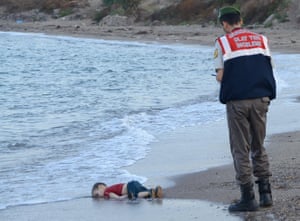Hey guys, I was scrolling through buzz feed last night and came across this article. It reminded me of the article we read in class!
Check it out here

Hey guys, I was scrolling through buzz feed last night and came across this article. It reminded me of the article we read in class!
Check it out here
Cohen and Kenny explain that basically anyone can make a video that could go viral as long as the they have the right recipe, and of course timing.
As a dedicated viewer of the Today Show, I rememberd seeing this report and felt it represents how unsuspecting images can become viral memes and cause a viral sensation:
http://www.vanityfair.com/culture/2015/10/ermahgerd-girl-true-story
Hey guys I found this over the weekend and I thought it was pretty interesting. The “ermmahgerd” girl talks about what its like to be a viral meme.
Here, we’ll start the discussion we’ll continue in class next week about Lebduska article, “Rasist Visual Rhetoric and Images of Trayvon Martin.”
This is an opportunity to make sense of the article together (similar to how we each write our excerpts/questions on the whiteboard in class), so let’s first tackle what the article is actually saying by crowdsourcing her main claims (thesis, points, evidence in support of those points) here. Then we can also unpack them, asking clarifying questions, complicating them, challenging then with provocations and counter-arguments, etc.
Don’t forget to include citations in MLA format when you refer to the text.
Here, we’ll continue the discussion we began in class today about Wetherbee’s article, “Picking Up the Fragments of the 2012 Election: Memes, Topoi, and Political Rhetoric.”
This is a challenging article (on many levels), so let’s first tackle what the article is actually saying by crowdsourcing his main claims (thesis, points, evidence in support of those points) here. Then we can also unpack them, asking clarifying questions, complicating them, challenging then with provocations and counter-arguments, etc.
Don’t forget to include citations in MLA format when you refer to the text.
Here, we’ll continue the discussion we began in class this week about Gries’s article, “Iconographic Tracking: A Digital Research Method for Visual Rhetoric and Circulation Studies.”
This is a challenging article (on many levels), so let’s first tackle what the article is actually saying by crowdsourcing her main claims (thesis, points, evidence in support of those points) here. Then we can also unpack them, asking clarifying questions, complicating them, challenging then with provocations and counter-arguments, etc.
Don’t forget to include citations in MLA format when you refer to the text.
Today in class, we’re building on the thinking / work you’ve done with the readings, and also your first drafts of this week’s presentation in order to see how images circulate / make visual arguments in practice. Therefore, each group will work on the image of the drowned Syrian boy who washed on the shore, recently.

Photo credit: http://www.theguardian.com/world/2015/sep/02/shocking-image-of-drowned-syrian-boy-shows-tragic-plight-of-refugees
This image has gone “viral” in a number ways, and is a fascinating case study (much like the Obama Hope image that Greis explores) of how images circulate.
In pairs, you will research this image together, track its circulation, and discuss what you find. You will have 15-20 minutes together to do this. Make sure to take notes as you can, and before we come back together as a class to discuss the assignment, you and your partner should make a collaborative post (include both of your names), summarizing your thoughts (categorize as “The Image That Shook The World” (it’s OK if you don’t completely finish – do the best you can, and then work to revise it for Thursday’s class). Here are some things to consider as you work:
As a non-Twitter Tweeter, I must say that the new feature is quite refreshing. The usual chaos of Twitter has always been a turn off for me. According to, Twitter’s Moments Will To Tame the Chaos, by Farhad Manjoo,
“The feature, called Moments, tries to transform Twitter’s chaotic timeline into a series of narratives that are easily navigated by people who aren’t familiar with the service’s strange rituals.”
Now with this new addition it is easy to filter through the piles of trending content; at a first glance shines lights on the changes in the filtering process of hashtags and the actual nature of a hashtag, the archiviblity of twitter, the curating of these said moments, and the actual meaning of a moment. However, it does raise the question of how all this content is being complied:
How do you feel about this new moment in Twitter’s history? Where do you think it goes from here? How long do think it will last? Will Twitter’s Moments only last a moment?
Marshall McLuhan famously said “the medium is any extension of ourselves,” which brings me to ask, are social media sites an extension of who we are or is it a fabricated persona of who we want to be perceived as through a mediated medium?